While I'm really not much of a gear fetishist -- musical instruments, and the tools that go with them, have come and gone a lot in my life -- I am discovering that some gear is just too sweet to move on from.
I'm in the process of selling off most of my musical gear. A lot of stuff I have had purely for the rigors of long-term, old school, professional touring. Since I am now fully new school, I just don't need this stuff anymore. For example, speakers. I don't need them anymore. I am using in-ear monitors and I go direct to the house board. And if you don't need speakers, then you don't need power amps either.
And since I am presently processing my live instrument entirely through the laptop, then I don't need stomp boxes or effects racks either.
The process of selling off my stuff is quite slow and laborous. And it turns out, there are few things that I just can't let go. Some boxes do something so unique that I can't send them off. Other things (a compressor and preamp, for example) I had planned on selling, but when I pulled them out to check that they were in good enough condition, I just couldn't... They had something about them that just made me hold on. There was some extra life that they added to the instrument that I could feel and sense in the articulation of my hands.
Here are those items. Those ones that I just couldn't let go and be replaced by their digital counterparts. I haven't included any of my Warr Guitars -- my main tapping instrument -- as it goes without saying that I can't play without them.
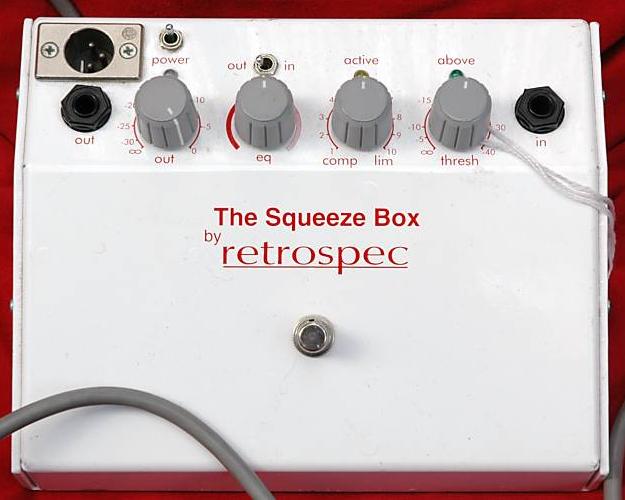
Electro-optical tube compressor in a stomp box. The Restrospec "Squeeze Box" has real tubes in it. Tony Levin turned me on this. It is no longer made. I almost put it up for auction two weeks ago, but plugged in first. Can't say exactly why but the bass end of my Warr Guitar just sounded great. I've played through tons of great compressions -- you know, they are only compressors, they don't completely and radically change the sound of anything -- but to be honest this thing just made the low end sit right with hardly any tweaking of the parameters at all. I even tried boosting the treble all the way up, which often is what I need to cut in order for the tapped strings to not sound too sizzly in a track. But this high end was a bonus. The threshold control, on the other hand, has to be treated with lot's of care. Turn it down too low and the impact from a tapped bass string can send it into "suck" mode very quickly. Sorry folks, I'm keeping this one.
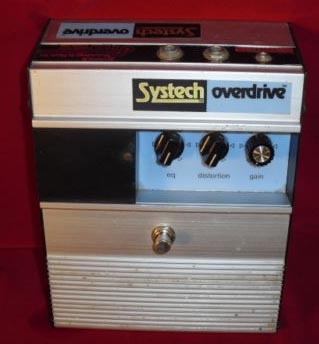
The Systech Overdrive. I've had this guy for ever. OK, maybe over 25 years. It has the most over-the-top buzzy, synthetic, fuzz sound. It is so fuzzy that you can't blend a guitar track using it into any mix without it sounding obvious. So it's only good for a lead part and only a particular kind of buzzy lead. I turn the eq knob so there is no treble at all. It isn't far from some Zappa guitar solo sounds. I used it on the mid solo of the studio version on "Dziban" on "The Third Star" CD. Keeping this one for ever. (note: it turns out Zappa did use this guy a lot during the 1970s.)

Alembic F-2B bass pre-amp. It has tubes in it. I bought this orginally to run two sides of the Chapman Stick through it. Hadn't used it for about a decade when I pulled it out to sell three years ago. I actually did sell it, but the guy who bought it had reservations about really wanting it and I had reservations about wishing I had it back. So we did an unsell and I got it back. Now it sits as one of my main ways to bring guitar or bass into Logic Audio. I'm replacing it's tubes this week.
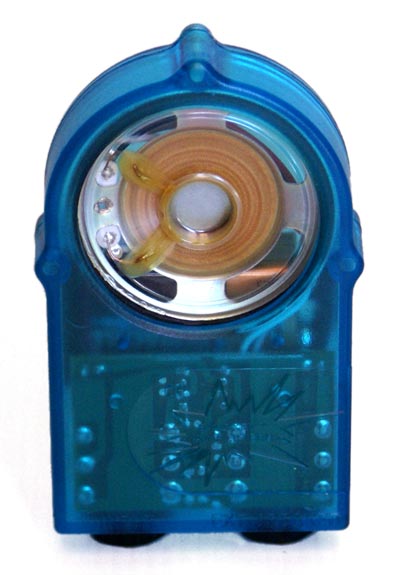
The Smokey amp by Zlinky. I originally got turned on to this concept by producer David Bottrill (Crimson, Tool, Peter Gabriel). David would mic up the smokey and then feed things from the track to it. Often times he would use it to re-record vocals through. But guitars or percussion, pretty much anything totally changed into something else. And whatever it ended up as always sat in the track in a totally new way. Believe or not, the output of this tiny amp can drive a Marshall cabinet. It isn't loud but it does work. I have had some customized ones made that have different gain structures for the in and outs. I use them in a peculiar way that you can see on the track "Sozzle". Instead of bringing the guitar to the amp to create feedback, I bring the amp to the guitar. See the middle solo of "Sozzle" on Youtube.com
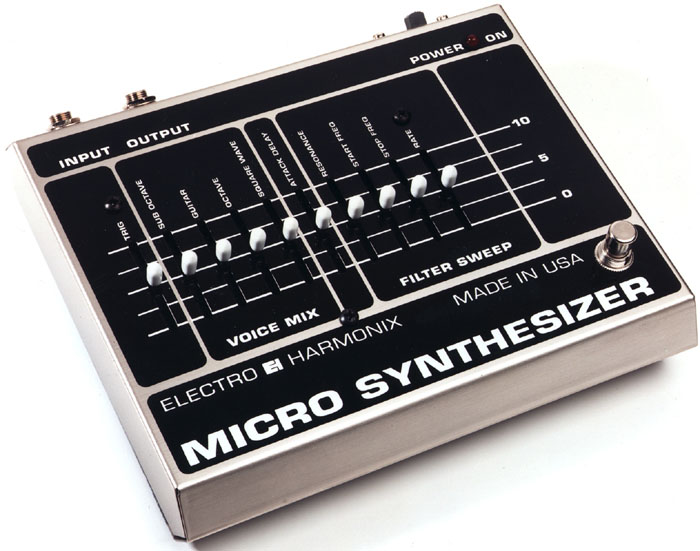
The Electro-Harmonix Microsynth. I love this sound. I just love it. It does the cool thing that guitar players just can not do: sound like a cello. And a fuzzed out crazy cello it we want. I give David Bottrill credit for getting me hooked on this one, too. We were mixing the cd "The Joy of Molybdenum" when some of the master tapes got lost in the mail. Which meant we didn't have enough material to complete the record. While Bob Muller was hunting down the UPS guy, Bottrill, Tony Geballe and I went into "fury" mode and recorded a new track. This became "Brief Encouter". Bob and I had already made the foundation months ago, but the track wasn't completed enough to warrant inclusion on the cd. However now we had no choice. David and I came up with a possible form and Tony laid down the acoustic guitar solo near the beginning. Then David pulled out his Microsynth which he got me to solo on for the ending. I was sold 1000%. It was a totally synthy sound that David didn't put any reverb on. David was like that - he could made an extremely dry sound fit into the mix. I've had one in my rig ever since. And while I must admit that Native Instruments Guitar Rig has a microsynth module that I now use onstage (because it is totally programmable), I still have to keep the analogue one here in my home studio, ready to go. Electro-Harmonix Micro Synthesizer XO Analog Guitar Microsynth

The Empirical Labs Distressor. Geez, another compressor. But I'm a sucker for colored lights and this unit has a blue LED next to the Nuke button. I can't say anything but YES to that. I began using the Distressor in my King Crimson touring rig. Since the attack of my tapped instrument is so intense on the bass strings, I would put this compressor right at the front. I would set it to 20:1 and sort of soft limit the highest energy notes. If I didn't do this, then I would have to turn down the input on the pre-amps far lower than they liked. Then I would split the signal into a clean line and distorted line. This two would come back together with the Raven Labs 2 channel (yes, I am selling that one) and into a final compressor: the DBX 160. The last compressor turned all the disparities of the two lines back into one big sound. Now I just use the Distressor in my studio for recording bass and guitar and vocals and percussion and harmonium and violins and bagpiges and.....
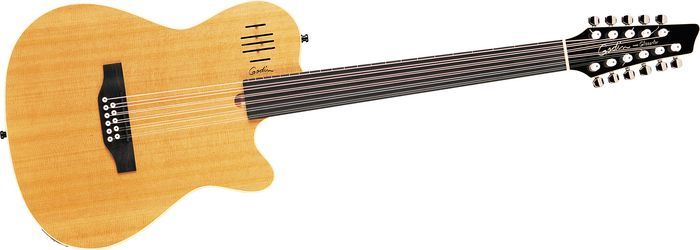
The Godin Glissentar. I first came across this around 2000 and I had to try it. It is modeled on the oud, which I love the sound of. And I loved the string configuration: Eleven strings in six groups. The top five strings are doubled in unison and the low string is on it's own. I had never played a fretless instrument before and felt a bit dubious about taking it on now. I had heard so many different musicians complaining about fretless bass players that played out of tune. But... screw it, I had to try this guy and ordered one. It wasn't so hard to play in tune at all. OK, I'm sure I am not perfect on it and I can totally hear when I am really out, but it is wonderfully fun to play. I tune it in fifths like a cello so the low string is a C. Oh wait, no it isn't. I tune it down a whole step from that, so the low string is a Bb. That is pretty wierd for me, but it works. The thing I like most about it is that it makes me think and hear so much more melodically than any other instrument. Plus it is real ear opener to to hear what a true major 3rd or minor 7th sounds like. You can't do that on a fretted instrument
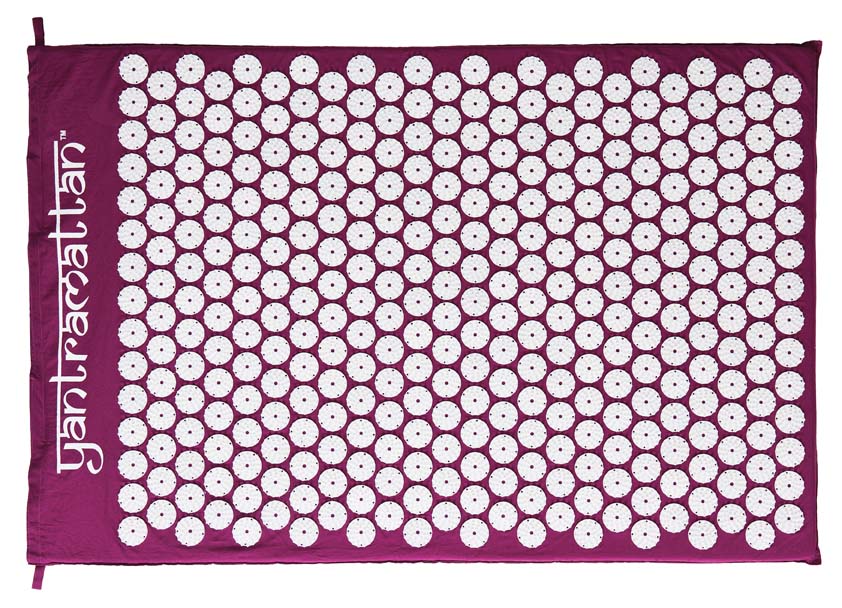
The YantraMattan. No studio is complete without it. Thousands of small spikes to push into your back. Kimmo Pohjonen, daredevil accordionist of KTU, turned Pat Mastelotto and I onto this when we were in Helsinki. It is not easy to get yourself settled on to this "nail mat" (and yes, you must take your shirt off), but once in place it super-invigorates. We used them backstage before gigs and between interviews. Kimmo was surprised how hard it is to sit on it with your bare ass. Yantramattan